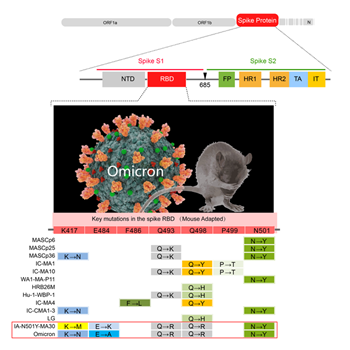Researchers discover that the Omicron variant may have originated in mice
Published 26 January, 2022
In November 2021, the World Health Organization (WHO) named the SARS-CoV-2 variant B.1.1.529 “Omicron”, and designated it the fifth variant of concern (VOC) to emerge since the start of the pandemic.
With the rapid spread of Omicron, and its emergence as the dominant strain of the virus in many countries, scientists have been eager to learn more about the variant and its origins. While they have been able to determine that Omicron developed from a strain that was circulating in mid-2020, they have been unable to trace any intermediate versions as Omicron evolved into its current form. One school of thought is that Omicron infected an animal and that the mutations emerged as it spread among that animal population, before it transferred back to humans.
A recent study published in KeAi’s Journal of Biosafety and Biosecurity, appears to support that animal theory. The research, led by Jianguo Xu from the National Institute for Communicable Diseases Control and Prevention China CDC, has found that the most likely intermediate host was a mouse.
According to Professor Xu, while much more work is needed before that theory can be confirmed, “our study calculated the average number of mutations in the five VOCs and investigated the key mutations in the viral S protein, where the infection originates. We found that the Omicron variant contains mutations at five key sites of the protein: K417, E484, Q493, Q498, and N501.
“This mutation profile shows that the virus has adapted to infect the cells of mice. In addition, the time-scaled phylogenetic tree shows that the Omicron and Gamma lineages were likely circulating in mid-2020, which supports the hypothesis that Omicron may have evolved in a non-human animal species. We believe that the coronavirus slowly accumulated mutations over time in mice, before it was transmitted back to humans by reverse zoonotic.”
He added: “These findings suggest that researchers should focus on SARS-CoV-2 variants isolated from wild animals, especially rodents. If Omicron is determined to have been derived from mice, the implications of it circulating among non-human hosts will pose new challenges in the prevention and control of the epidemic.”
###
Contact the corresponding author: Jianguo Xu, xujianguo@icdc.cn


